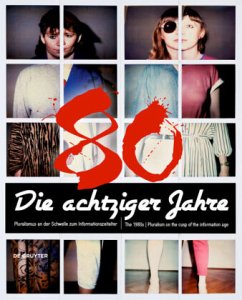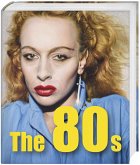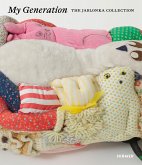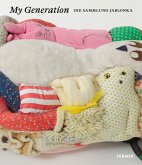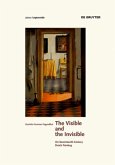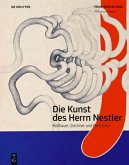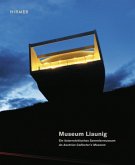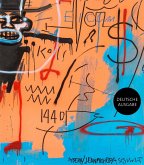The fourth volume of the chronological documentation of the MUSA, Museum Start Gallery Artothek’s collection, is dedicated to the 1980s. This comprehensive and richly illustrated catalog of works provides insight into the art movements as well as the cultural life of this decade in Austria.
The fourth volume of MUSA's history of collecting is dedicated to the 1980s. This phase of the hotly debated "postmodernism?” is marked by the emergence of the art market that initially focused on ?"Neue Wilde” male-dominated painting. But the great attention paid to this international trend can be easily overlooked due to other trends that were emerging at the same time.
The geometric abstraction of "Neue Geometrie” or "Neo Geo” was considered an alternative to the expressive tendencies in figurative painting, the dematerialization of art is another notable trend, and photography regains prominence for the first time since 1945. Concept and new media also play an important role, as does the computer, which begins to take on significance as a visual arts tool. Many artists were leading contributors to all of these fields
Im vierten Band seiner Sammlungsgeschichte nimmt das MUSA die 1980er Jahre in den Blick. Diese Phase der heftig diskutierten "Postmoderne" ist vom Erstarken des Kunstmarkts geprägt, der anfänglich vor allem auf die männlich dominierte Malerei der "Neuen Wilden" setzte. Doch die große Aufmerksamkeit, die dieser internationalen Strömung zu Teil wurde, lässt leicht übersehen, dass sich daneben zahlreiche andere Richtungen etablierten. Die geometrische Abstraktion als "Neue Geometrie" oder "Neo Geo" wurde als Gegenentwurf zur expressiven Grundhaltung der figurativen Malerei gesehen. Besonders wichtig erscheint auch die Tendenz zur Entmaterialisierung der Kunst. Die Fotografie erkämpft sich erstmals nach 1945 einen prominenten Platz; Konzept und neue Medien spielen ebenso eine wichtige Rolle wie der Computer, der auch als bildnerisches Mittel seinen Siegeszug beginnt. In all diesen Bereichen waren viele Künstlerinnen führend beteiligt.
Hinweis: Dieser Artikel kann nur an eine deutsche Lieferadresse ausgeliefert werden.
The fourth volume of MUSA's history of collecting is dedicated to the 1980s. This phase of the hotly debated "postmodernism?” is marked by the emergence of the art market that initially focused on ?"Neue Wilde” male-dominated painting. But the great attention paid to this international trend can be easily overlooked due to other trends that were emerging at the same time.
The geometric abstraction of "Neue Geometrie” or "Neo Geo” was considered an alternative to the expressive tendencies in figurative painting, the dematerialization of art is another notable trend, and photography regains prominence for the first time since 1945. Concept and new media also play an important role, as does the computer, which begins to take on significance as a visual arts tool. Many artists were leading contributors to all of these fields
Im vierten Band seiner Sammlungsgeschichte nimmt das MUSA die 1980er Jahre in den Blick. Diese Phase der heftig diskutierten "Postmoderne" ist vom Erstarken des Kunstmarkts geprägt, der anfänglich vor allem auf die männlich dominierte Malerei der "Neuen Wilden" setzte. Doch die große Aufmerksamkeit, die dieser internationalen Strömung zu Teil wurde, lässt leicht übersehen, dass sich daneben zahlreiche andere Richtungen etablierten. Die geometrische Abstraktion als "Neue Geometrie" oder "Neo Geo" wurde als Gegenentwurf zur expressiven Grundhaltung der figurativen Malerei gesehen. Besonders wichtig erscheint auch die Tendenz zur Entmaterialisierung der Kunst. Die Fotografie erkämpft sich erstmals nach 1945 einen prominenten Platz; Konzept und neue Medien spielen ebenso eine wichtige Rolle wie der Computer, der auch als bildnerisches Mittel seinen Siegeszug beginnt. In all diesen Bereichen waren viele Künstlerinnen führend beteiligt.
Hinweis: Dieser Artikel kann nur an eine deutsche Lieferadresse ausgeliefert werden.

